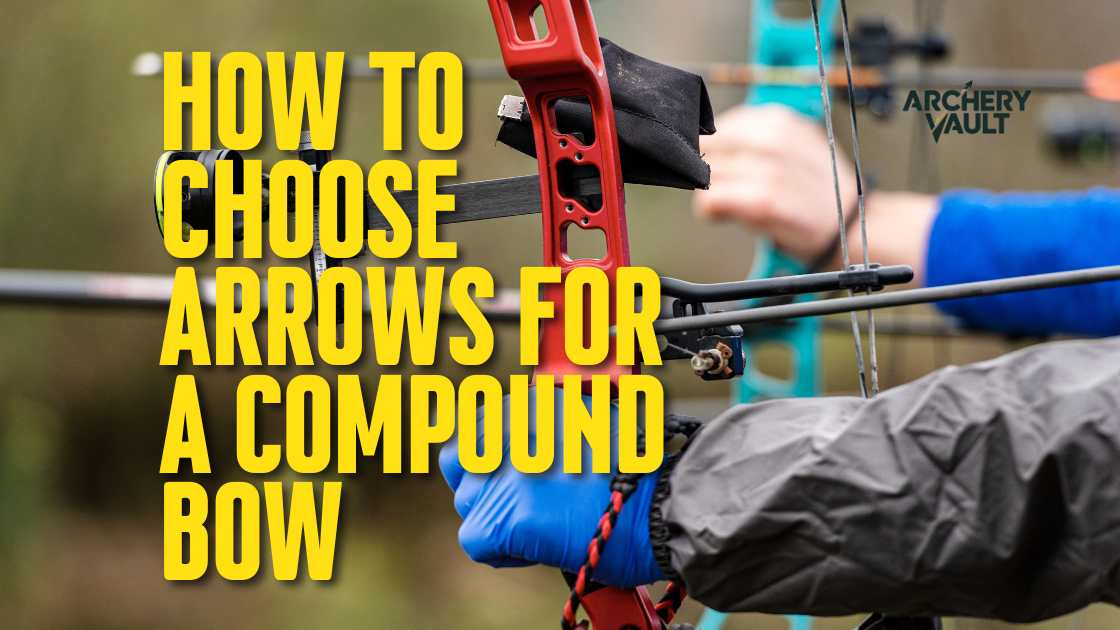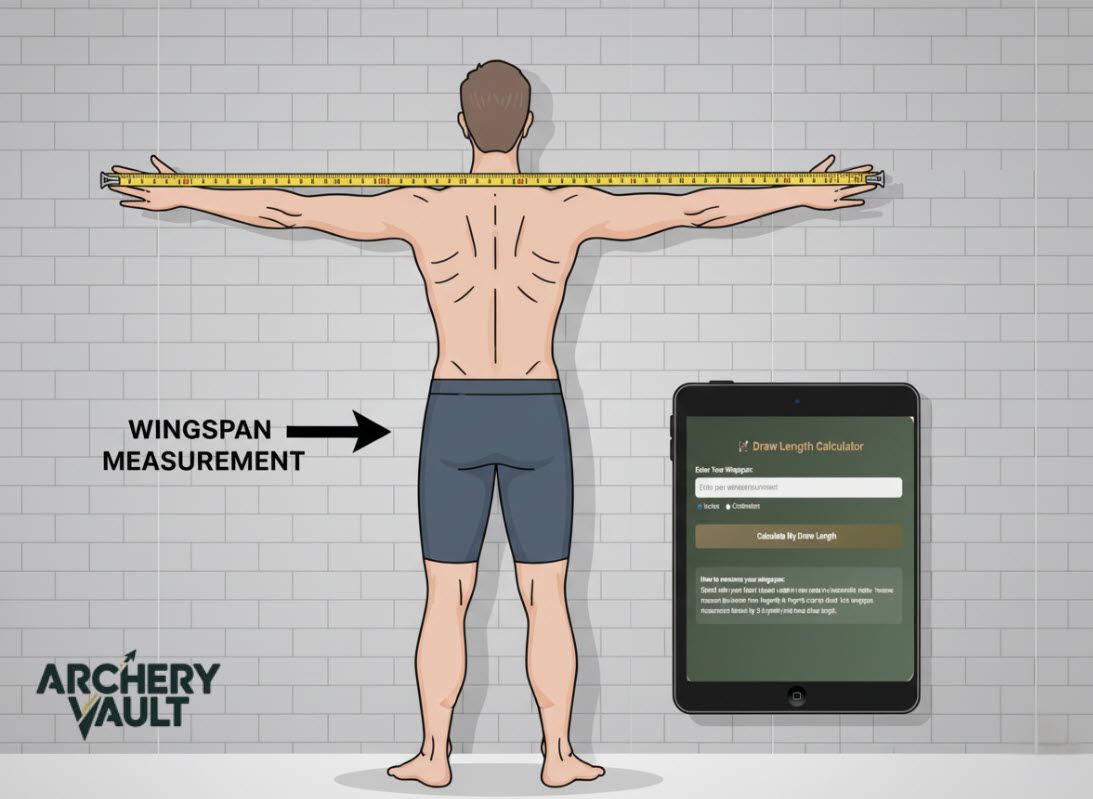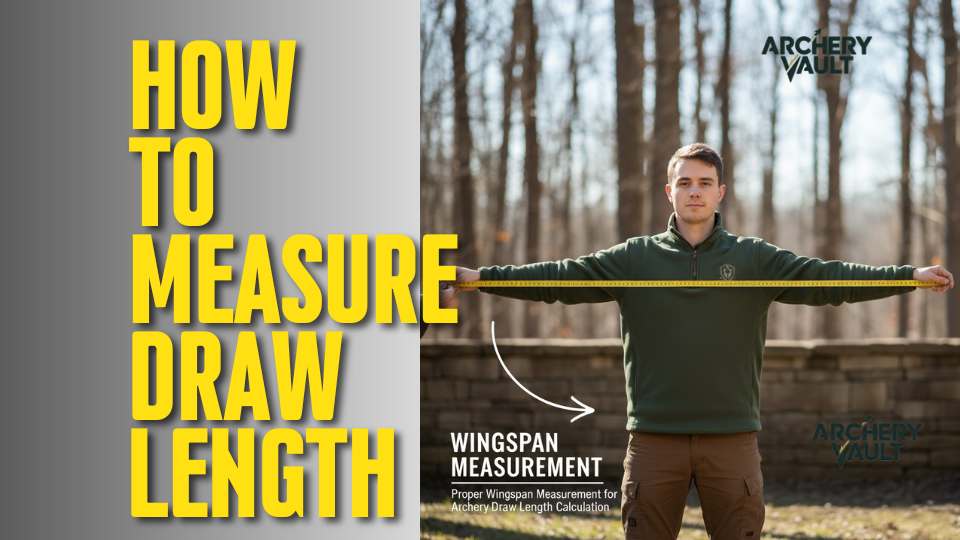Buying the wrong arrows is expensive and frustrating. You show up to the range, your groups are all over the place, and you’re wondering if it’s your form or your gear. Nine times out of ten with new archers, it’s the arrows. They grabbed whatever looked good online without matching spine, length, or weight to their actual bow setup.
Choosing the right arrows for compound bows isn’t complicated once you know what matters. This guide walks you through arrow spine, materials, length, and weight so you buy arrows that actually work with your bow instead of fighting against it.
Arrow Spine: What It Is and Why It Matters
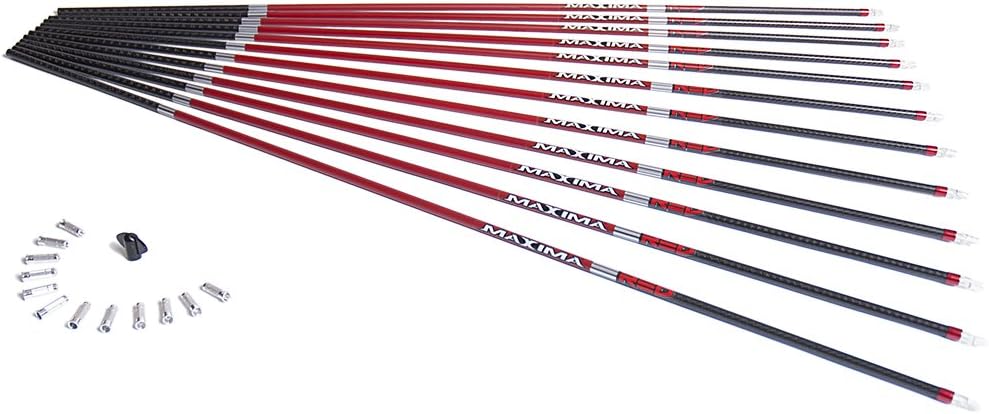
Arrow spine measures shaft stiffness. When you release, the arrow flexes around the bow (that’s archer’s paradox in action). Too stiff and it won’t flex properly. Too weak and it flexes too much. Either way, your arrow flight suffers and accuracy goes out the window.
Spine ratings use numbers like 300, 340, 400, 500. Lower numbers mean stiffer shafts. A 300 spine arrow is considerably stiffer than a 500 spine. Heavier draw weights need stiffer arrows to handle the extra force pushing them downrange.
Your compound bow’s draw weight, draw length, and the point weight you’re using all affect which spine you need. A 60-pound bow shooting 29-inch arrows with 100-grain points needs different spine than a 50-pound bow shooting 27-inch arrows with 125-grain points. Use our arrow spine calculator to get in the ballpark, then fine-tune from there.
How to Determine the Right Arrow Spine for Your Setup
- Start with your bow’s actual peak draw weight, not what it’s capable of. If you’re shooting 60 pounds even though your bow maxes at 70, use 60 for spine selection. Lying to yourself about poundage just means you’ll buy the wrong arrows.
- Next, measure your draw length accurately. Every inch of length changes how much the arrow flexes. Longer arrows need weaker spine because they flex more. Shorter arrows can handle stiffer spine. Most compound bow setups for adults fall somewhere between 27-31 inches.
- Check the manufacturer’s spine chart for your chosen arrow. Easton, Gold Tip, Carbon Express, and Black Eagle all use slightly different measurement systems. Don’t assume a 340 spine from one brand flies exactly like a 340 from another. Cross-reference your specs with their specific chart.
Arrow Materials: Carbon vs Aluminum for Hunting
Carbon arrows dominate modern bowhunting for good reason. They’re lighter, faster, more durable, and don’t bend permanently like aluminum. Drop an aluminum arrow wrong and you might not notice the bend until you’re wondering why it’s flying sideways. Carbon either survives or breaks – there’s no guessing.
Aluminum arrows still have a place in target archery where extreme precision matters and durability isn’t critical. They’re also cheaper, which matters if you’re shooting hundreds of arrows for practice. But for hunting where you need arrows that survive being dragged through brush and potentially hitting bone, carbon wins.
The best arrows for most bowhunters are pure carbon or carbon with an aluminum core (like Easton FMJ). Pure carbon keeps weight down for flat trajectory and speed. Carbon with aluminum adds durability for better penetration when you hit shoulder blades or ribs. Pick based on what you’re hunting and how much speed you’re willing to trade for toughness.
Arrow Length: Getting the Measurement Right
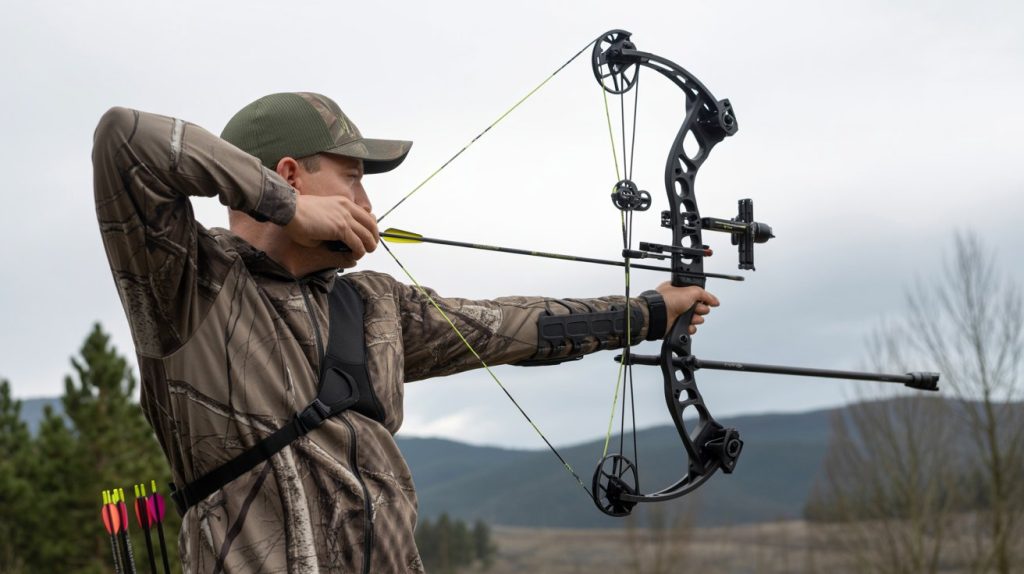
Arrow length gets measured from the throat of the nock to the end of the shaft, not including the point. Stand at full draw and have someone mark where the shaft extends past your arrow rest. Add 1-2 inches for safety – you never want an arrow that’s too short because it’s not safe to shoot if it doesn’t extend past the rest.
Most adult compound bow setups need arrows between 27-30 inches. Shorter draws obviously need shorter arrows. Going longer than necessary just adds weight and slows your arrow down without any benefit. Going shorter is dangerous if you overdraw even slightly.
Once you know your proper arrow length, that measurement affects everything else. Longer arrows need weaker spine. Shorter arrows can handle stiffer spine. The three variables (draw weight, arrow length, point weight) all interact to determine the correct arrow spine for your bow setup.
Choosing Fletching: Vanes vs Feathers
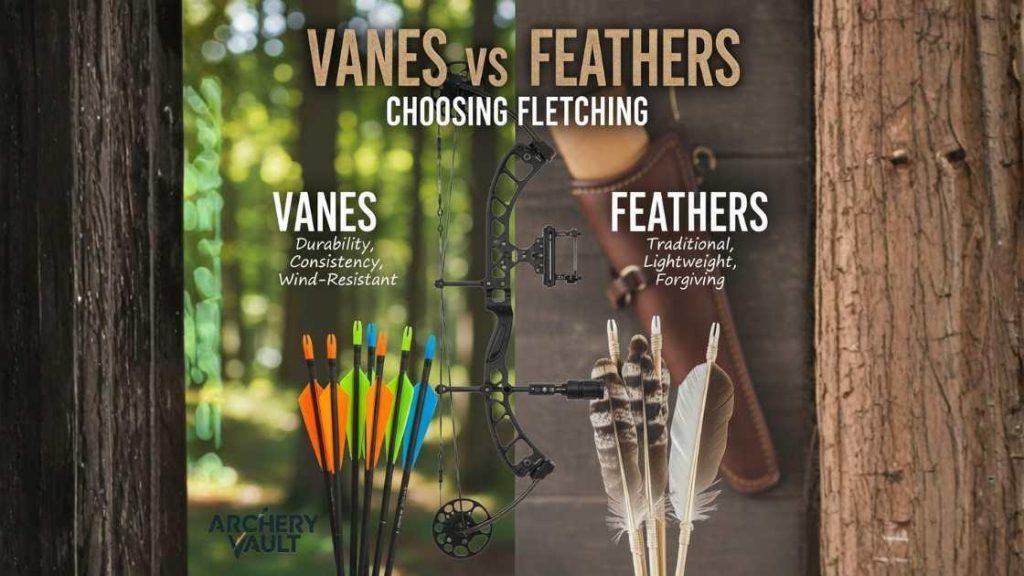
Plastic vanes are the standard for compound bow hunting arrows. They’re waterproof, consistent, and don’t care about weather. Feathers work great on traditional recurve bows where you need more forgiveness, but they get waterlogged and lose effectiveness in rain or snow.
Vane size matters for stabilization vs speed. Larger vanes stabilize the arrow faster but create more drag and slow it down. Smaller vanes are faster but take longer distance to stabilize. For hunting arrow setups where shots are typically under 40 yards, mid-size vanes (around 2-3 inches) balance speed and stability well.
Fletching configuration affects arrow flight too. Straight vanes are fastest but least forgiving. Offset adds slight rotation for better clearance and forgiveness. Helical creates the most rotation and stabilization but costs you the most speed. Most bowhunters run slight offset or low helical – enough rotation to fly straight without killing their arrow speed.
Arrow Weight and Penetration
Total arrow weight includes the shaft, insert, nock, vanes, and point. Heavier arrows penetrate better and carry more kinetic energy to the target. Lighter arrows fly faster with flatter trajectory but don’t punch through as well when they hit bone.
For whitetail deer hunting, most setups run 400-450 grain total arrow weight. That’s heavy enough for reliable penetration without being so heavy that trajectory suffers past 30 yards. Hunting bigger game like elk, you want 450-500+ grains. More mass up front means better penetration through heavy bone and muscle.
Check your arrow speed and FOC balance once you’ve selected arrow components. You want 10-15% FOC for hunting arrows – that front-heavy balance improves penetration and arrow flight stability. Too little FOC and your arrows won’t fly consistent. Too much and you’re just making them unnecessarily heavy.
⚖️ Arrow Weight Calculator
Total arrow weight affects speed, trajectory, kinetic energy, and penetration. Lighter arrows (350-400 grains) fly faster with flatter trajectories. Heavier arrows (450-550 grains) penetrate better and carry more kinetic energy to the target. For whitetail deer, 400-450 grains is ideal. For elk and larger game, aim for 450-500+ grains. Balance your setup based on your hunting needs.
Matching Arrows to Your Compound Bow Setup
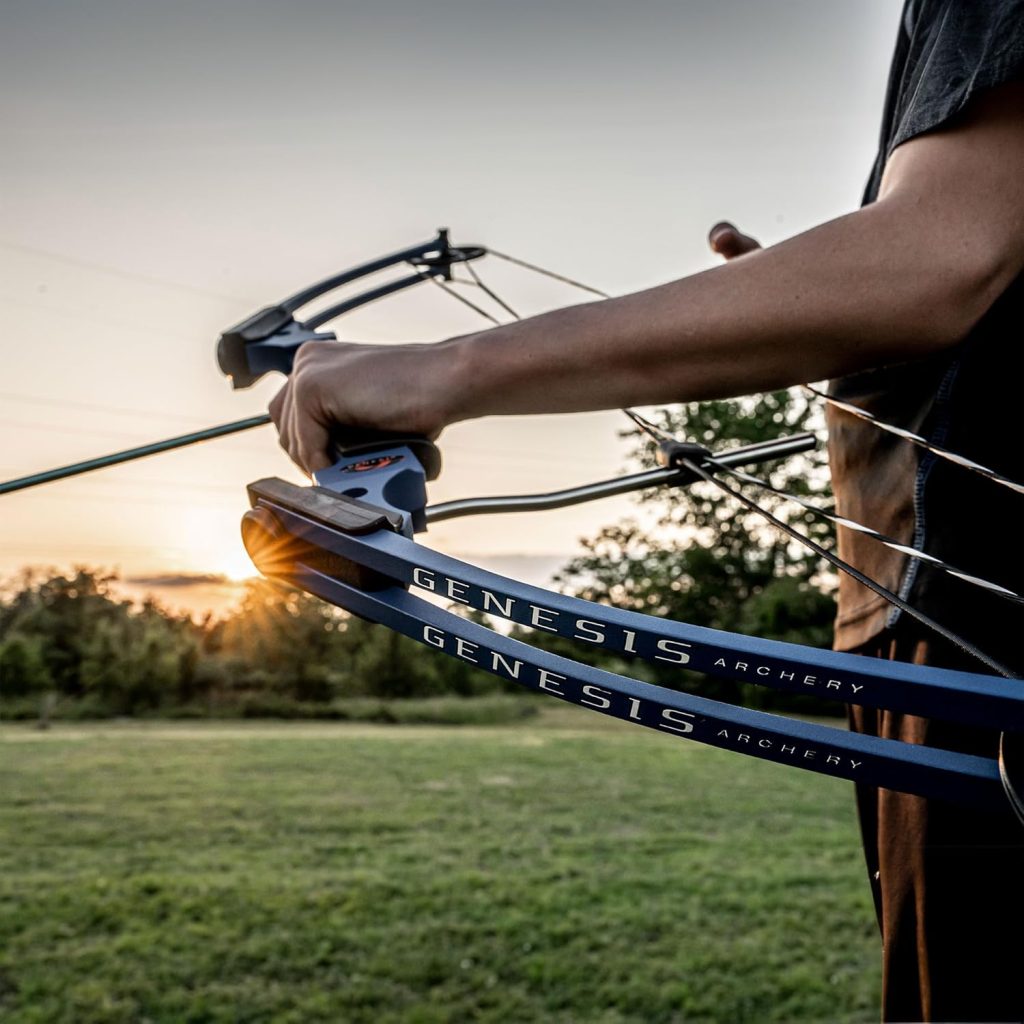
Your bow’s specs determine which arrows will work. A 70-pound bow shooting 30-inch arrows needs stiffer spine than a 50-pound bow shooting 27-inch arrows. Simple physics. The chart from the arrow manufacturer tells you where you land, but real-world tuning might require going up or down one spine size.
Modern compound bows are pretty forgiving compared to recurve bows or older compounds. You’ve got some wiggle room with spine selection. But get it really wrong – like shooting 500 spine arrows out of a 70-pound bow – and no amount of tuning will fix the poor arrow flight.
Start with the manufacturer’s recommendation based on your draw weight, length, and point weight. Buy a half dozen arrows in that spine. Shoot them, paper tune if you know how, and see if they’re flying straight. If they’re showing stiff (nock left tears for right-handed shooters), try the next weaker spine. If they’re showing weak (nock right tears), go stiffer.
Common Mistakes When Buying Hunting Arrows
The biggest mistake is buying arrows based on what looks cool instead of what matches your bow. I’ve watched guys buy the fastest, lightest arrows they can find, then wonder why they’re getting terrible penetration and inconsistent groups. Speed isn’t everything in archery. Proper spine and adequate weight matter more for hunting.
Another common error is not accounting for broadhead weight when selecting spine. You practiced all summer with 100-grain field points, then screwed on 125-grain broadheads for hunting season. That extra 25 grains changes how your arrow flexes, and suddenly nothing flies right. Build your hunting arrows with the actual broadhead weight you’ll use, or at least practice points that match.
Many bowhunters also cut their arrows too short trying to save weight and gain speed. Then they get a new bow with slightly longer draw, or they’re wearing heavy clothes in a treestand and their draw extends a quarter inch more than usual. Now they’re shooting arrows that aren’t safe because the shaft doesn’t extend past the rest at full draw. Leave yourself that extra inch or two – it’s cheap insurance.
Getting Help from a Pro Shop
If you’re new to bowhunting, a good archery pro shop saves you from expensive mistakes. A qualified bow technician can measure your draw length properly, check your actual draw weight, and recommend arrows that match your specific bow setup. They’ll also build your arrows correctly with proper components.
The few extra bucks you spend at a pro shop versus buying random arrows online pays off in arrows that actually work. They’ve seen every mistake in the book and can steer you away from common pitfalls. Plus they can paper tune your setup to verify everything is working together properly.
That said, not every shop employee knows what they’re doing. Ask questions about spine selection and see if their answers match what you’ve learned here. A good technician explains the reasoning behind their recommendations rather than just grabbing whatever’s on the shelf.
Quick Arrow Selection Summary
Here’s what matters when choosing arrows for hunting with your compound bow:
- Arrow spine must match your draw weight, arrow length, and point weight – use a spine chart or calculator as a starting point
- Carbon arrows are the best choice for durability, consistency, and performance in hunting situations
- Proper arrow length is measured from nock throat to shaft end, adding 1-2 inches beyond your draw for safety
- Total arrow weight between 400-500 grains works for most deer hunting setups, heavier for bigger game
- Front-of-center (FOC) balance should be 10-15% for optimal penetration and arrow flight
- Plastic vanes with slight offset or helical work better than feathers for compound bow hunting
- Don’t buy arrows based on speed alone – proper spine and adequate weight matter more for consistent accuracy and ethical kills
- When in doubt, get help from a qualified pro shop technician who can measure your setup and recommend appropriate arrows
What arrows are you shooting, and how did you decide on them?

